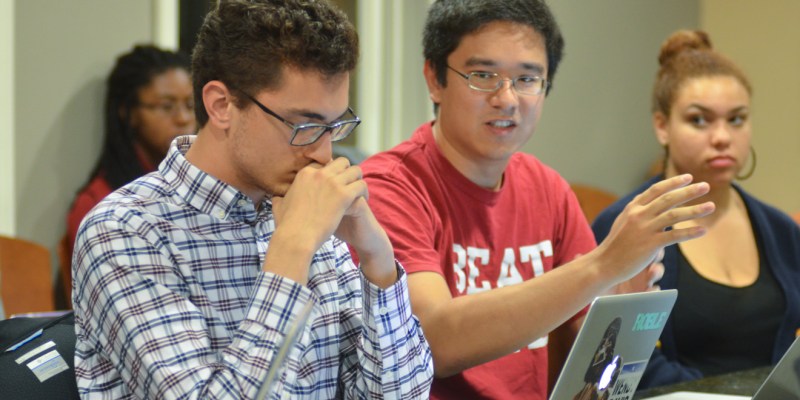
(RAGHAV MEHROTRA/The Stanford Daily)
With the deadline to complete the opt-out waiver for the activities fee passing on Monday, the ASSU’s buffer fund came back into focus for the Undergraduate Senate.
The Senate is set to propose new guidelines for the buffer fund by the end of the year. After last year, when ASSU ran out of money in the General Fee Reserve to fund groups, the Senate drew $170,660 from the fund to cover its costs.
As a result of having to use the buffer fund, the Senate created the ASSU Joint Legislative Committee on Buffer Fund Expenditure Policies. The committee must recommend new rules for the buffer fund by Jan. 1, 2015.
“We’re not using the buffer fund right now, and we don’t have policies for it. We need to figure that out,” Senate Chair Ben Holston ’15 said.
What the buffer fund is
Every quarter, students are charged an activities fee that is used to finance the student groups that receive funding from ASSU. Students have the option of waiving all or part of their student activities fee if they do not wish or are unable to pay it. To account for this, the activities fee includes an additional 10 percent to compensate for those fees that are waived.
If less than 10 percent of the activities fees revenues are waived, which is usually the case, then the excess money goes into the buffer fund. The money accumulates from year to year, ensuring that there will be money available to draw from if more than 10 percent of the activities fee is ever waived.
While there is always the possibility that a high number of students will choose to waive their fee, it is not a common occurrence. Last year, 6.2 percent of undergraduate students chose to waive their fee averaged across the three quarters. As a result, the buffer fund has grown from $253,610 when it was started in 2005 to $701,653.
The system is designed primarily to protect large groups that might be singled out by students when they choose which fees to specifically waive, Holston said. Because students can see how much money they are giving to each group, the fear is that students, trying to save themselves money, will choose not to fund groups that receive comparatively large amounts of money.
While the main purpose of the buffer fund is to provide a safety-net for waivers, it can be used for any purpose the Senate deems appropriate. The Senate, however, is reluctant to use the funds.
Reforming the buffer fund
The Joint Legislative Committee on Buffer Fund Expenditure Policies plans to meet in the next two or three weeks, with the task of deciding the future of the buffer fund and how it will be used.
What exactly those rules look like remains to be seen. One possibility could be that the committee recommends the fund be used for a large one-time expenditure. Senator Anthony Ghosn ‘16, who believes that having large amounts of money in reserves encourages the Senate to be fiscally irresponsible, said that a good option would be to eliminate the buffer fund and use the money to fund groups, thus driving down the activities fee for the next several years.
“Students are basically losing money if the buffer fund doesn’t get used,” Holston said. “That’s why we want to come up with policies so we can say, ‘Let’s start spending this down.'”
Ghosn is also skeptical that there will ever be enough students who opt out of paying the activities fee to cause a crisis that requires a large reserve. In fact, he said the possibility of that happening would put more pressure on the Senate to streamline its policies and funding decisions.
“If there is a mass exodus (from paying the activities fee) it means we haven’t proven our worth,” Ghosn said.
Another option would be allocating the buffer fund for new grant programs. The committee could recommend that both undergraduate and graduate buffer funds be viewed not as a reserve for emergencies but a source of funding for special initiatives, and encourage these types of projects.
Contact Katie Zingheim at zingheim ‘at’ stanford.edu.
